Key Insights
- Want to trade on Binance Futures? First, understand its features.
- This guide breaks down everything about Binance’s futures trading.
- Remember, futures trading can be risky. Always be prepared.
Starting with Binance Futures
Trading futures might sound complex, but it’s just about buying and selling at future prices. Binance Futures might look tricky at first, but this guide will help you get the hang of it.
Setting Up Your Account
To start with Binance Futures, you need a basic Binance account. Here’s how:
- You can go to Binance main page and click ‘Sign Up‘ ( use this link to receive 20% off fees for a lifetime)
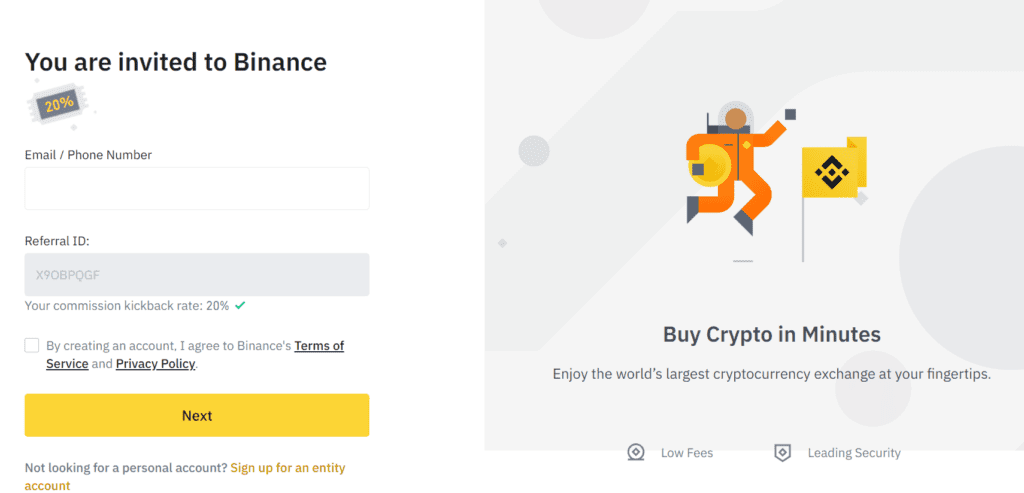
2. Put in your email and a strong password. If you click sign up, add it. Then, click ‘Register’.
3. Check your email and follow the steps.
4. Log in, hover over ‘Derivatives’, and select USD(S)-M Futures.
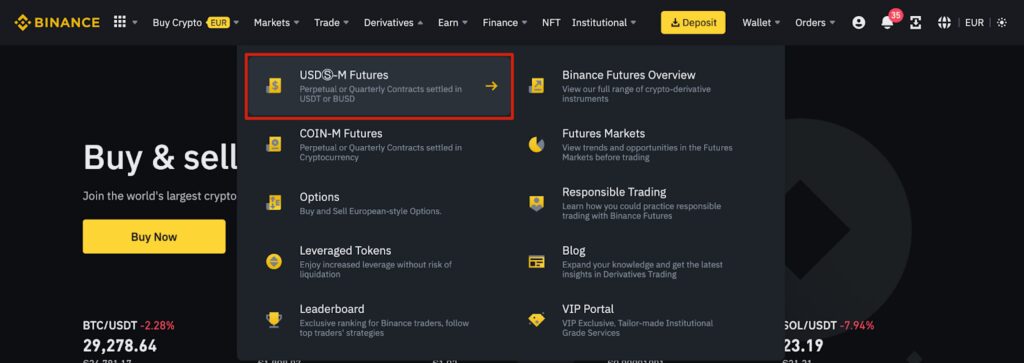
5. Click ‘Activate’ or ‘Open Now’ to start your Binance Futures.

Note: You need to properly educate yourself about it before you start trading.
If futures trading is new to you, Binance Futures has a FAQ section. Want to practice without using real money? Try the Binance Futures testnet.
How to Fund Your Binance Futures Account
To trade on Binance futures, you must have existing funds in your account. If you don’t already have any existing funds in your wallet balance, check the ‘Depositing on Binance‘ guide. To move funds to your Binance Futures account:
- Click the transfer symbol on the Binance Futures page.

- Choose how much to transfer and confirm. Your Binance Futures account will show the new amount.
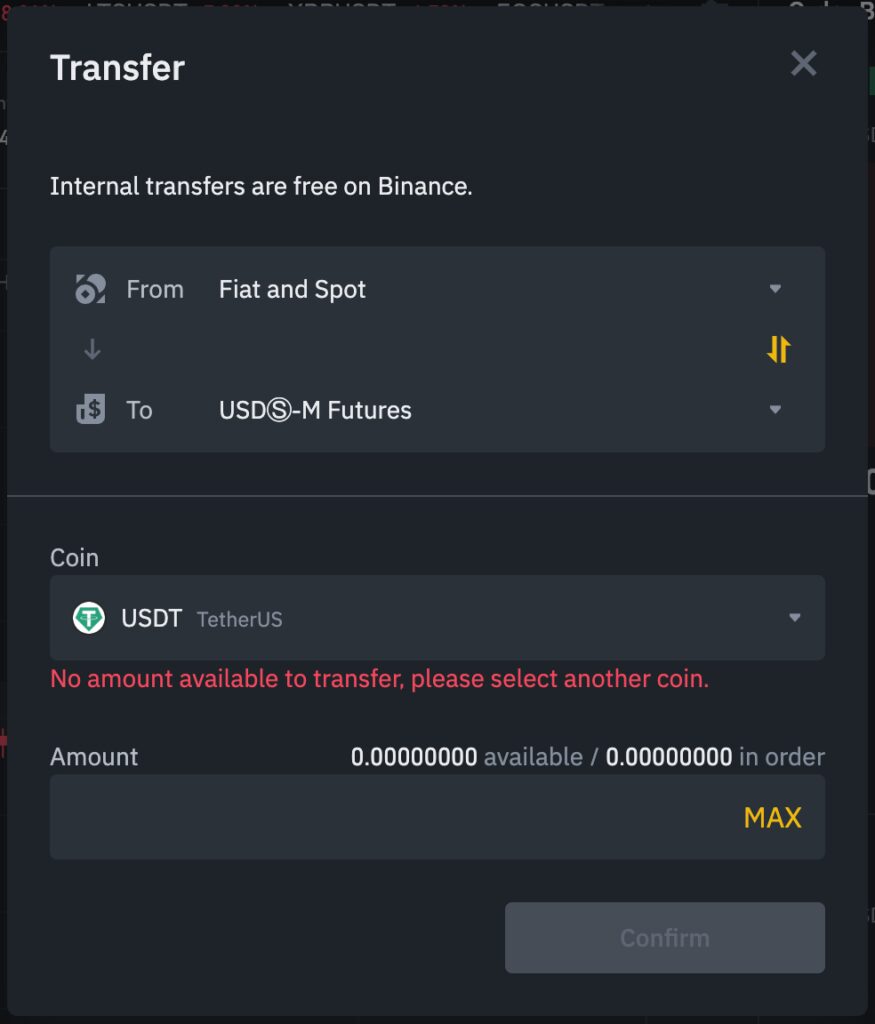
The Binance Futures Page Explained

- The Menu has links to other Binance pages, including COIN-M Futures, Options, Strategy Trading, and Activities, can be found in the ‘Menu’ section. Links to the Futures FAQ, API Access, financing rate, index price, and other market data are available under the ‘Information’ tab.
To access your Binance account, look for the tab on the top bar on the right.
2. The ‘Price Chart’ shows:
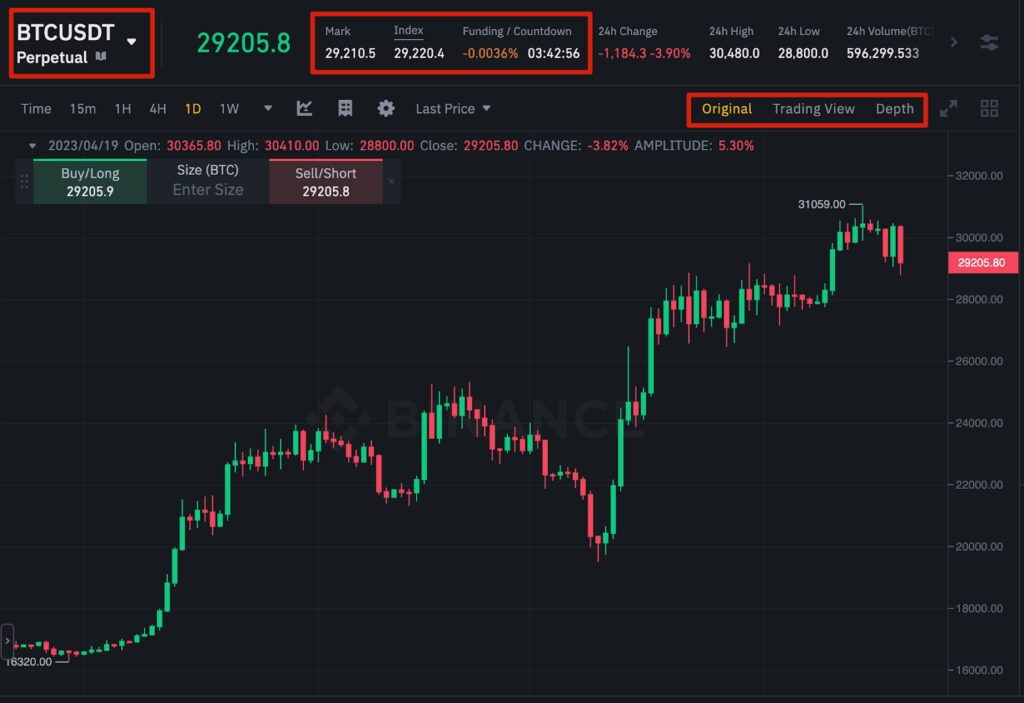
- Current contracts.
- The Mark Price.
- The current chart and order book.
- Live order data and past trades.
3. The ‘Trading Activity Panel’ shows your trading actions
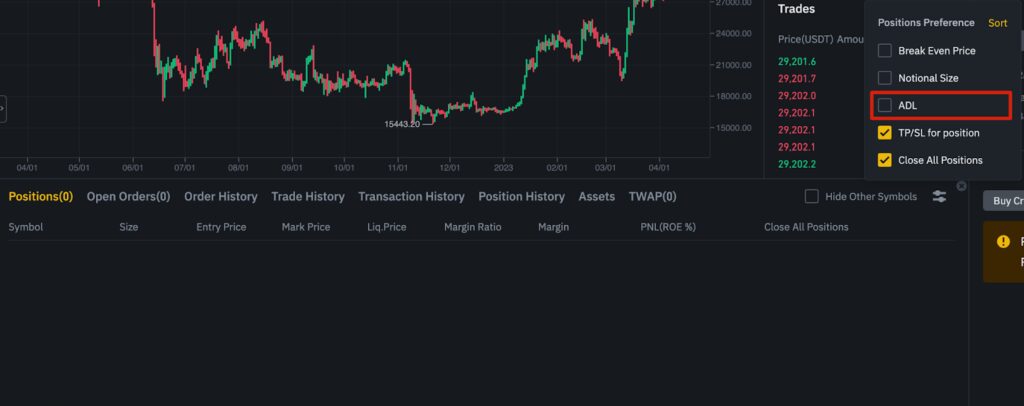
4. The ‘Margin Overview’ shows your funds and contract details. You can make transfers, check your available assets, and purchase additional cryptocurrency under the ‘Margin Overview’ section. You can check details about your positions and the current contract here as well. In order to avoid liquidations, make sure you monitor the margin ratio.
5. You enter your Buy/Long and Sell/Short orders in the ‘Order Entry’ section. A more thorough description of the various order kinds is provided later in this post. At the top of the display, you can also alternate between Cross Margin and Isolated Margin. Click on the amount of leverage you now have (20x by default) to change it.

Adjusting Your Leverage
Binance Futures lets you change the leverage for each contract. To change it, go to ‘Order Entry’ and click on the number. Move the slider or type the amount you want.
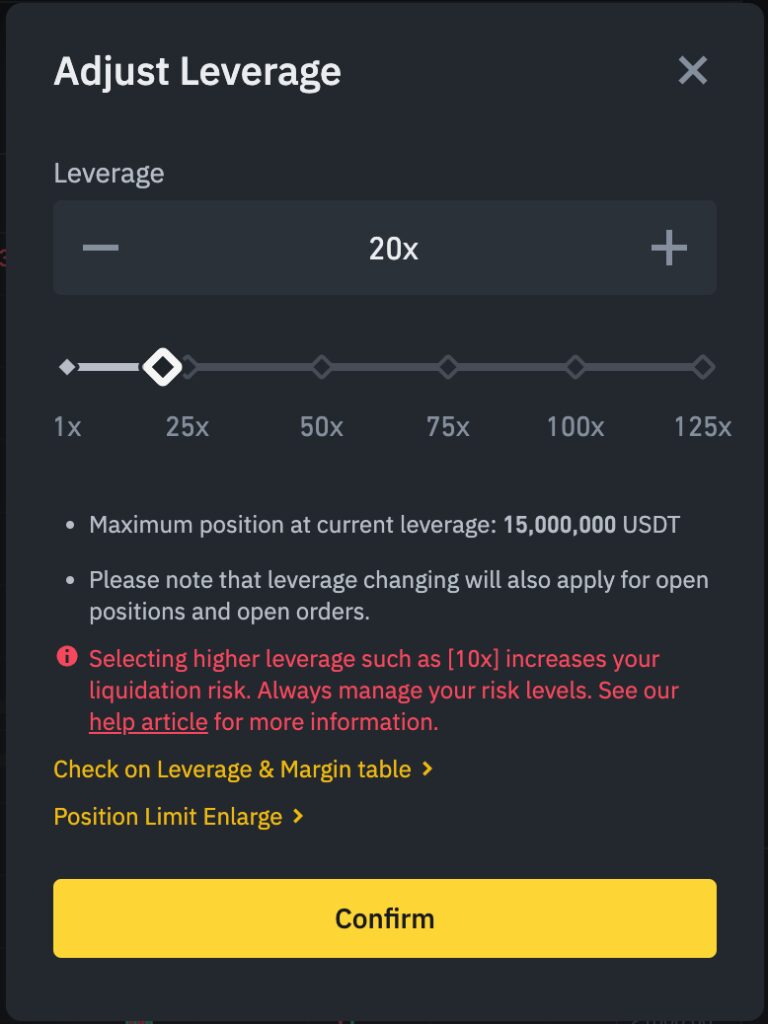
Please take note that your available leverage will decrease with increasing position size. It works similarly in that you can utilise more leverage the smaller the position size. There is an increased danger of liquidation when using more leverage.
Every trader should, as usual, carefully assess the risk involved in using a certain degree of leverage.
Mark Price vs. Last Price
Binance Futures uses two prices: last price and mark price. The last price is the recent trading price. The mark price is a mix of funding data and other prices.

Types of Orders
Binance Futures offers many order types like Limit Order, Market Order, Stop-Limit Order and Stop-Market Order. Each helps traders in different ways.
Limit Order
An order with a specified limit price that is put in the order book is known as a limit order. A limit order means that the trade will only be carried out if the market price hits your limit price, or even higher. Limit orders provide you the option to sell at a greater price than the going rate in the market or to acquire at a cheaper price.
Market Order
An order to purchase or sell at the best current price available is known as a market order. Executed in opposition to the limit orders that were previously entered into the order book. As a market taker, you will be required to pay costs when placing a market order.
Stop Limit Order
Dividing a stop-limit order into its stop price and limit price is the simplest way to comprehend it. The price that initiates a limit order is known as the stop price, and the price at which the triggered limit order has its limit is known as the limit price. This implies that your limit order will be instantly entered into the order book as soon as your stop price is met.
Stop Market Order
A stop–market order leverages a stop price as a trigger, just like a stop-limit order. Instead, a market order is triggered when the stop price is reached.
Using the Binance Futures Calculator: A Detailed Look
The Binance Futures Calculator is a handy tool that helps traders make informed decisions by providing crucial data before making a trade. Here’s a more in-depth look at its features:
1. PNL (Profit and Loss) Tab
- Purpose: This tab helps you understand potential profits or losses based on your intended entry and exit prices.
- How to Use:
- Input your intended entry price, exit price, and the size of your position.
- The calculator will display your Initial Margin (the amount you need to open the position), the Profit and Loss (the difference between your entry and exit), and the Return on Equity (the percentage of profit or loss relative to your initial margin).
2. Target Price Tab
- Purpose: This tab calculates the price you need to exit your position to achieve a specific return percentage.
- How to Use:
- Input your desired return percentage and other details of your position.
- The calculator will show the exit price needed to achieve that return.
3. Liquidation Price Tab
- Purpose: It’s crucial to know when your position might be automatically closed due to market movements. This tab helps you understand that risk.
- How to Use:
- Input details like your account balance, entry price, and position size.
- The calculator will display the price at which your position would be automatically closed, ensuring you don’t lose more than your initial margin.
How to Use Hedge Mode: A Closer Look
Hedge Mode is a feature that allows traders to hold positions in both directions (long and short) for the same contract. This can be beneficial for traders who have a mixed view of the market. Here’s a detailed breakdown:
1. What is Hedge Mode?
- Purpose: Hedge Mode allows traders to protect their investments. For instance, if a trader is optimistic about the long-term price of an asset but expects short-term volatility, they can use Hedge Mode to balance their positions.
2. How to Activate Hedge Mode
- Steps:
- Navigate to the top right of the Binance Futures interface and select ‘Preferences’.
- Choose the ‘Position Mode’ tab.
- Select ‘Hedge Mode’ to activate.
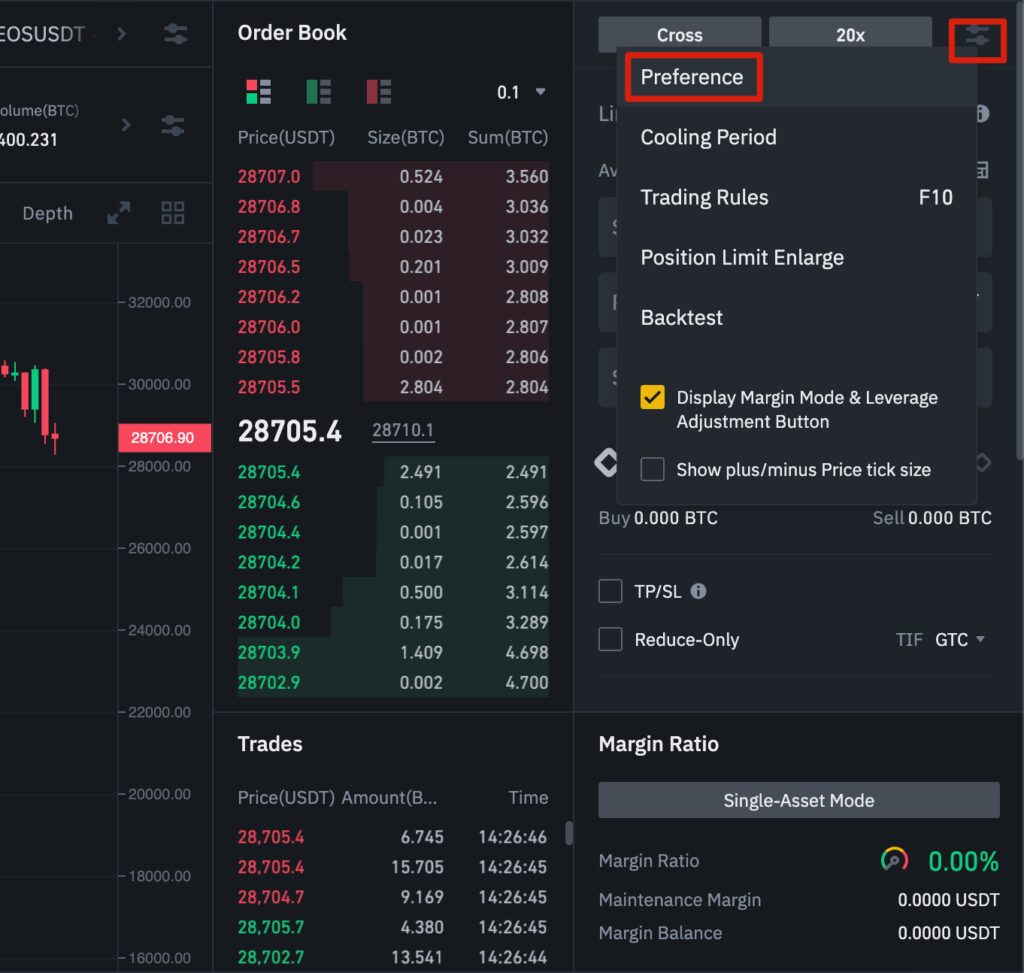
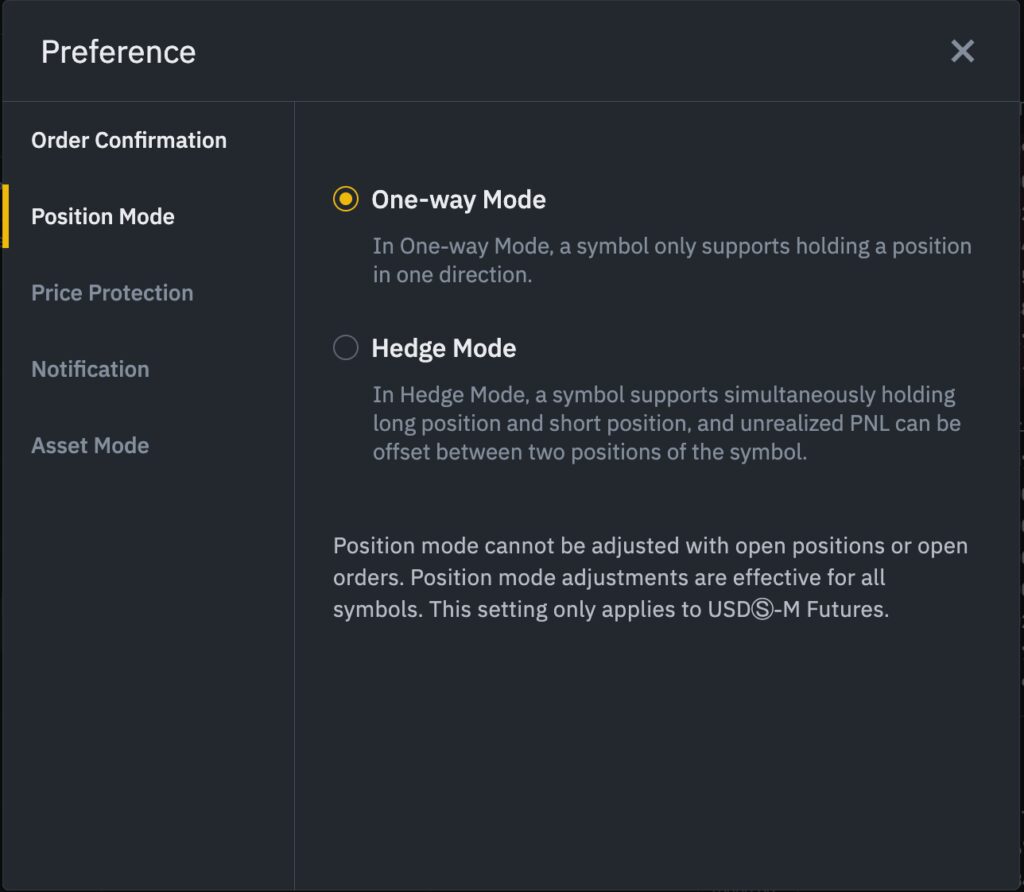
Note: If you have open orders or positions, you’ll need to close or cancel them before switching modes.
3. One-Way Mode vs. Hedge Mode
- One-Way Mode: This is the default mode where you can’t have both long and short positions open for the same contract simultaneously. If you try, they’ll offset each other.
- Hedge Mode: In this mode, you can have both long and short positions open for the same contract, allowing more strategic trading.
What is the Funding Rate and How to Check it? A Comprehensive Guide
The funding rate is a mechanism to ensure that the price of the perpetual futures contract remains close to the underlying asset’s market price. Here’s a deeper dive:
1. Purpose of the Funding Rate
- It ensures that the futures contract price doesn’t stray too far from the actual market price of the asset.
- It involves periodic payments between traders, depending on their positions and the market’s behavior.
2. How It Works
- If the funding rate is positive, traders with long positions pay those with short positions.
- If the funding rate is negative, traders with short positions pay those with long positions.
3. Checking the Funding Rate
- On the Binance Futures platform, you can see the estimated funding rate for the next period at the top of the page, near the mark price.
- For a historical view, hover over ‘Information’ and select ‘Funding Rate History’. This provides a record of past funding rates for each contract.
Understanding the Risk of Liquidation: A Beginner’s Guide
Liquidation is a term you’ll often hear in futures trading. It’s crucial to understand what it means and how to avoid it.
1. What is Liquidation?
- It’s when your trade is automatically closed because your margin balance isn’t enough to cover potential losses.
2. When Does Liquidation Happen?
- If your margin balance drops below the required maintenance margin, your position might be liquidated. Your margin balance includes your account balance and any unrealized profits or losses.
3. How to Avoid Liquidation?
- Monitor your margin ratio. If it’s close to 100%, you’re at risk of liquidation.
- Consider adding more funds to your account or closing some positions to increase your margin balance.
4. Manual vs. Auto-Liquidation
- Manual liquidation means you choose to close a position to prevent it from being automatically liquidated.
- Auto-liquidation happens automatically when your margin ratio hits 100%. It’s best to avoid this as it comes with extra fees.
Auto-Deleveraging (ADL): What It Means for Traders

In highly volatile markets, there’s a risk that the Insurance Fund might not cover all losses. That’s where Auto-Deleveraging comes in.
1. What is ADL?
- It’s a system that reduces open positions to cover losses when the Insurance Fund can’t.
2. How Does ADL Affect You?
- In extreme market conditions, your open positions might be reduced to cover losses. The most profitable and highest leveraged traders are first in line.
3. How to Check Your ADL Status?
- On Binance Futures, hover over the ‘ADL’ in the ‘Positions tab’ to see where you stand in the queue.
Final Thoughts: Trading Safely and Smartly
Trading futures, especially perpetual futures, can be complex. But with the right knowledge and tools, you can navigate the market confidently. Always remember to practice first, like using the Binance Futures testnet, before risking real money. And always stay informed and cautious to make the best trading decisions.
And as always if you would like to take it a step further and receive real-time trading signals when the best Binance Future Traders are making their moves.

